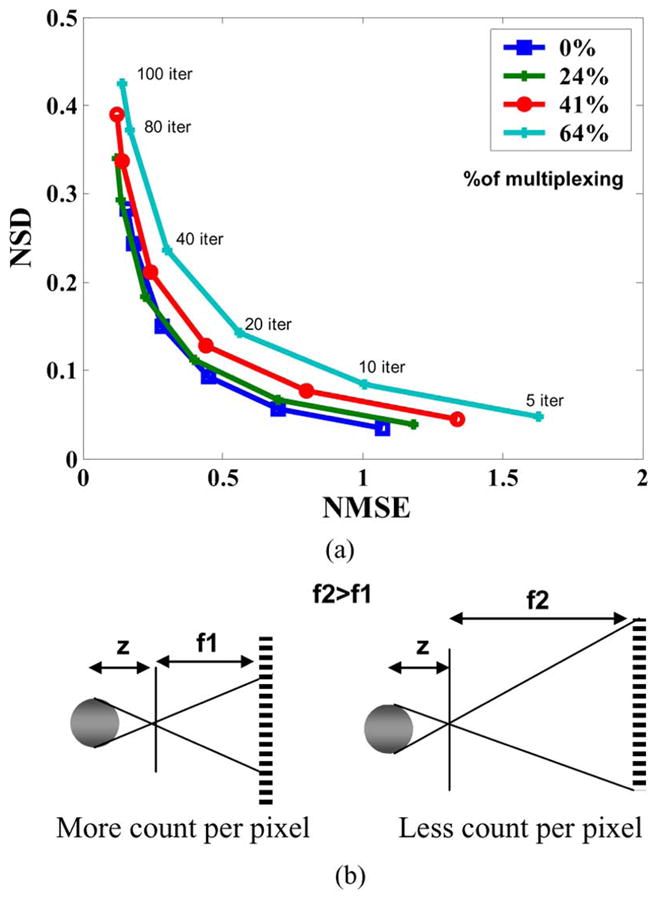Fig. 10.

(a) The bias and noise trade-offs were plotted for different degrees of multiplexing, i.e., 0%, 24%, 41% and 61% in scheme (2) with the MOBY phantom simulation. The bias increased for higher degree of multiplexing but their differences were smaller comparing to scheme (1). The noise level increased for a higher degree multiplexing here which is opposite to scheme (1), since more pixel elements shared a given number of incident photons at a higher magnification setting and the statistical variation for each pixel element increased as explained in (b). The projection count level for the noise study is 4M. The trade-off of bias and noise again showed that a lower degree of multiplexing offered a better performance.
